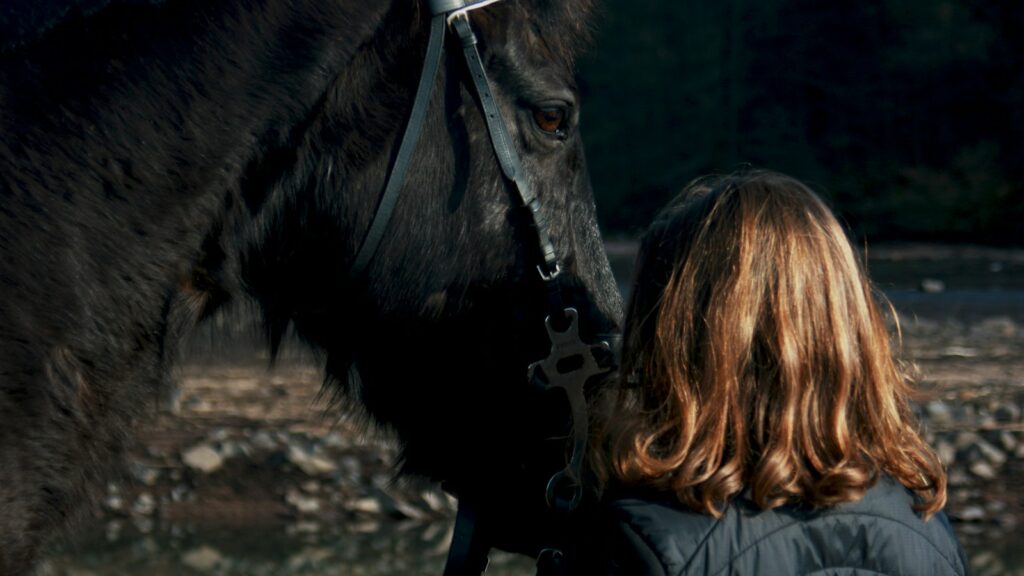From raging floodwaters to collapsing mineshafts, the history of human-horse relationships is punctuated by remarkable tales of rescue and survival. Horses, with their powerful bodies and trusting natures, sometimes find themselves in perilous situations that require extraordinary human intervention. These dramatic rescue stories not only highlight the special bond between humans and equines but also showcase incredible ingenuity, determination, and compassion. The following collection of rescue stories represent some of the most heart-stopping, inspiring, and memorable moments when humans went to extraordinary lengths to save their equine companions from seemingly impossible circumstances.
The Miracle of Missy: Trapped in a Sinkhole
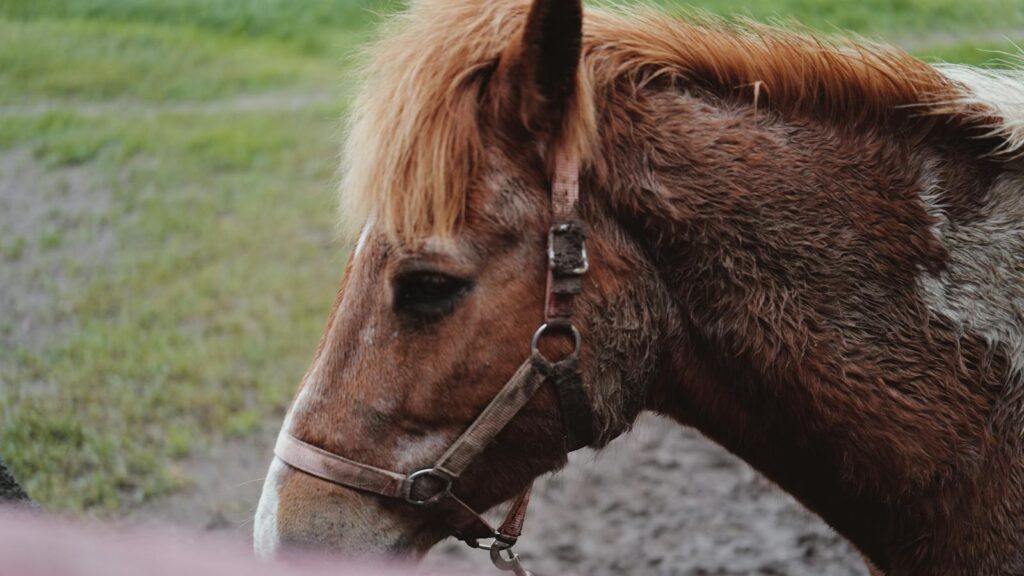
In 2015, a 24-year-old mare named Missy became the center of a dramatic rescue operation in Hinckley, Ohio when she fell into a 10-foot sinkhole that suddenly opened in her pasture. The beloved family horse had disappeared from sight, only to be discovered hours later standing in groundwater at the bottom of the unexpected cavity. Rescuers faced a significant challenge: how to extract a 1,000-pound animal from a narrow, unstable hole without causing further injury. After nearly eight hours, involving multiple fire departments, veterinarians, and a construction company that donated a backhoe, rescuers successfully fashioned a makeshift harness and gently lifted Missy to safety. Despite spending hours in cold water and experiencing mild hypothermia, Missy made a complete recovery, becoming known in the local community as “the miracle mare who beat the odds.”
Cinders’ Flight from Wildfires
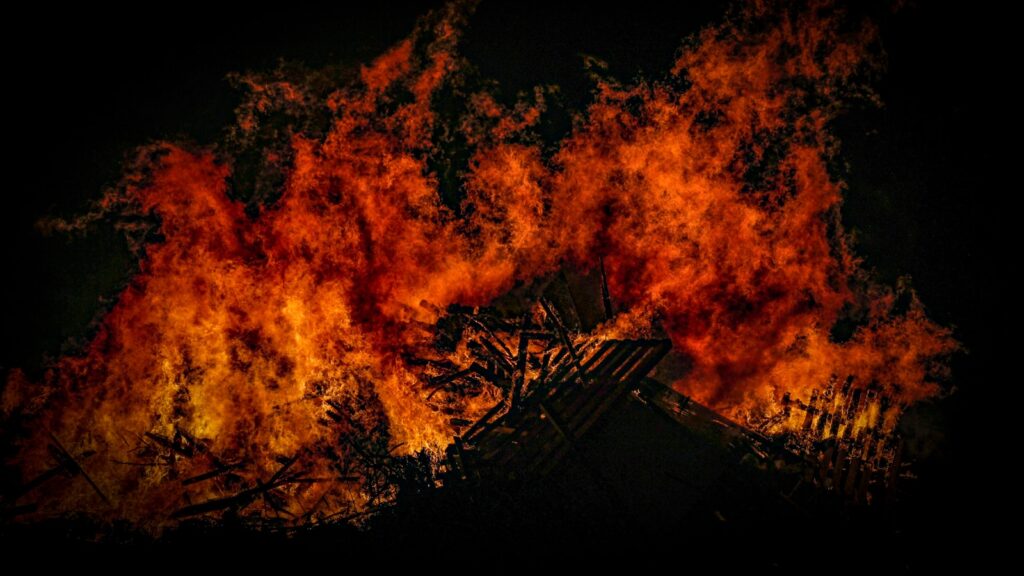
The 2018 California wildfires created scenes of apocalyptic devastation as they swept through residential areas with unprecedented speed. In Paradise, California, a horse trainer named Jeff Hill discovered a horse that had somehow survived the inferno by seeking refuge in a backyard swimming pool. The mare, later named Cinders, had fallen into the pool while fleeing the flames and managed to balance herself on a narrow submerged step for hours, keeping her head above water while the fire raged around her. Hill and his team carefully guided the exhausted and traumatized horse up the pool steps and away from the water. Suffering from burns and smoke inhalation, Cinders received intensive veterinary care before being reunited with her owners, who had been forced to evacuate without her as the fast-moving fire approached their property. Her story became a symbol of resilience and hope amid the devastating wildfires that claimed so many homes and lives.
Astro’s Mud Pit Ordeal
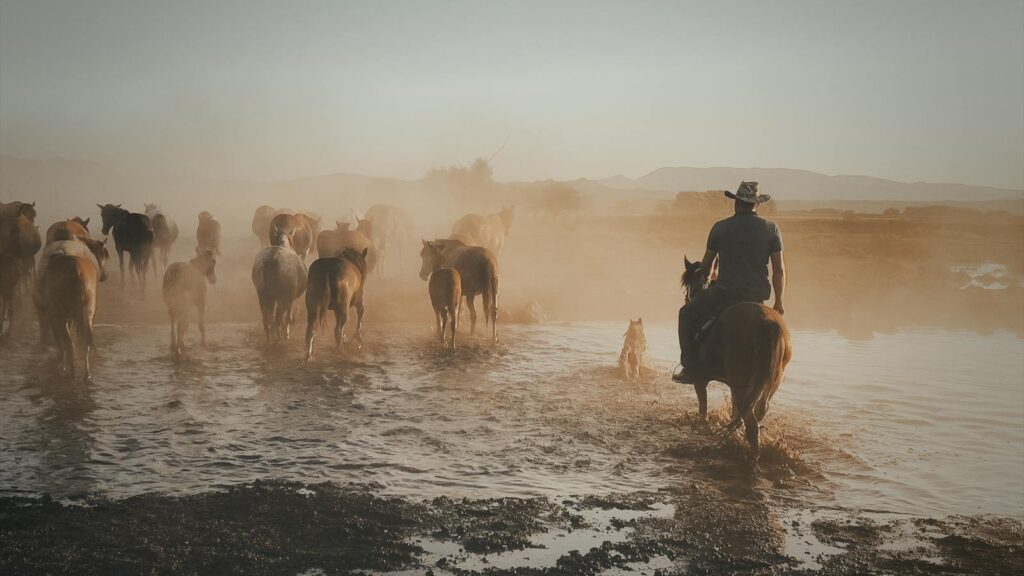
In March 2012, a three-year-old Shire horse named Astro became trapped in a mud pit in Australia’s Marysville State Forest after wandering away from his paddock. The young draft horse, weighing over 1,800 pounds, sank deeply into the thick, clay-like mud and was unable to free himself, becoming more entrenched with each struggle. By the time rescuers arrived, only Astro’s head and a small portion of his back remained visible above the mud. What followed was a five-hour rescue operation involving more than a dozen emergency responders, including members of the State Emergency Service and Country Fire Authority. After multiple failed attempts using straps and ropes, rescuers finally succeeded by digging pathways through the mud and using a specialized harness system attached to a tractor. Despite severe exhaustion and dehydration, Astro made a remarkable recovery, standing just hours after his rescue and returning to full health within weeks.
Molly’s Hurricane Katrina Survival
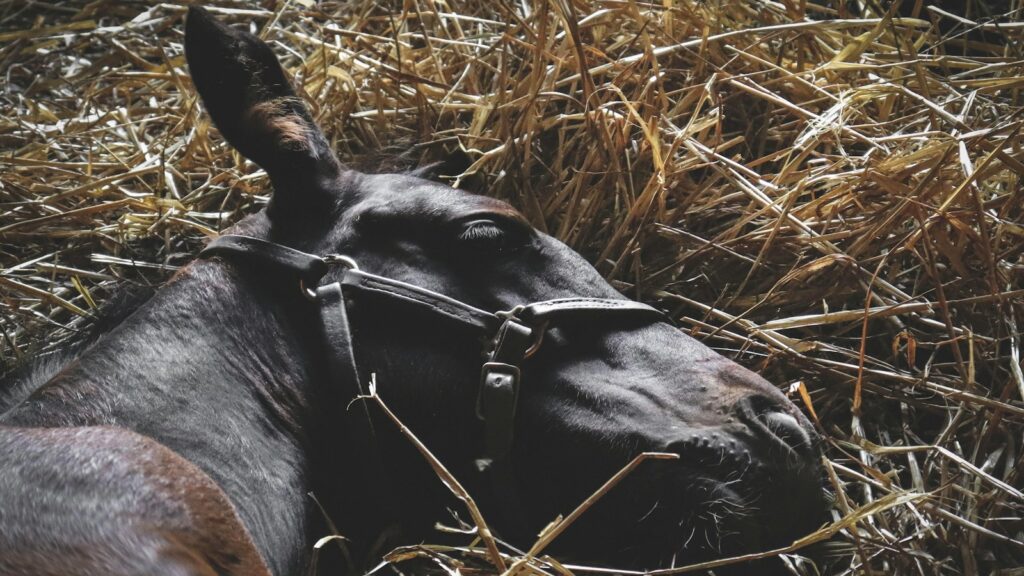
When Hurricane Katrina devastated New Orleans in 2005, a pony named Molly was among the countless animals left behind in the chaotic evacuation. Abandoned in a flooded stable for weeks, Molly somehow managed to survive on minimal food and contaminated water until rescuers finally reached her. Her ordeal wasn’t over, however—months after her rescue, she was attacked by a pit bull, resulting in such severe injuries to her right front leg that amputation became necessary. In an unprecedented move, veterinarians at Louisiana State University fitted Molly with a prosthetic limb specially designed for equine use—one of the first successful cases of its kind. Against all odds, Molly adapted to her prosthetic leg with remarkable determination. She went on to become a therapy horse, visiting hospitals, nursing homes, and schools, particularly connecting with amputee patients and children with disabilities. Her journey from hurricane survivor to amputee therapy horse made her an international symbol of resilience.
Seabiscuit’s Rescue from Slaughter
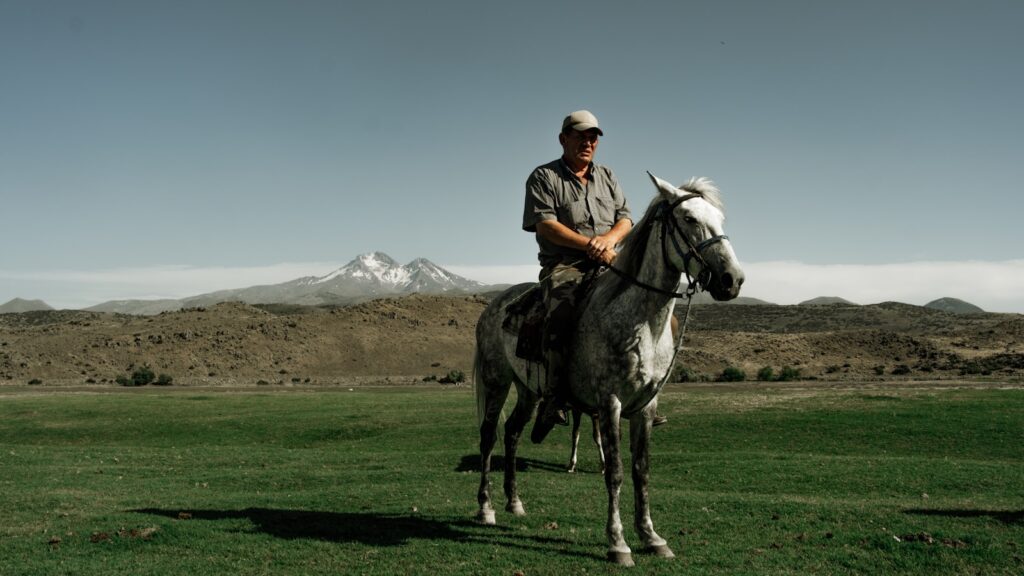
Before becoming one of the most celebrated racehorses in American history, Seabiscuit was headed toward an ignominious end. Considered too small and too lazy to be successful on the track, the young thoroughbred had been relegated to smaller races and was racking up losses rather than wins. By 1936, the three-year-old horse had raced 35 times with only modest success and was on the verge of being sold for slaughter when trainer Tom Smith spotted something special in him. Smith convinced owner Charles Howard to purchase the undersized, knobby-kneed horse for $8,000—a decision that would change horse racing history. Under Smith’s patient training and jockey Red Pollard’s guidance, Seabiscuit transformed into a racing phenomenon, eventually defeating the heavily favored War Admiral in their famous 1938 match race. His rags-to-riches story not only saved him from a premature end but also inspired a nation struggling through the Great Depression.
Penny’s Dramatic Cliff Rescue

In 2013, a young mare named Penny became the focus of an intricate rescue operation in Cornwall, England, after falling 80 feet down a steep cliff onto a narrow beach. The 5-year-old horse had been spooked during a beach ride, throwing her rider before bolting and plunging over the cliff edge. Remarkably, Penny survived the fall with only minor injuries, but the incoming tide threatened to drown her as she lay stranded on the narrow strip of beach. A coordinated rescue effort involving coastguard teams, veterinarians, and a specialized animal rescue unit was quickly organized. With time running out before high tide, rescuers sedated Penny, carefully secured her in a specialized harness, and used a system of pulleys to lift her up the cliff face. The operation took over five hours and required perfect coordination among the rescue teams. Penny made a full recovery and was eventually reunited with her owner, becoming something of a local celebrity in Cornwall for her miraculous survival.
The Pit Ponies of Senghenydd

The 1913 Senghenydd colliery disaster in Wales remains Britain’s worst mining accident, claiming the lives of 439 miners. Less known is the fate of the pit ponies—small, sturdy horses that worked underground pulling coal cars. When an explosion ripped through the mine on October 14, 1913, most of the 74 ponies working that day were presumed dead. Against all expectations, rescuers descending into the devastated mine to recover bodies found a small group of ponies still alive in a pocket of relatively clean air. Over the next several days, as recovery operations continued, rescuers managed to bring eleven ponies to the surface—some having survived for nearly a week underground without food and with minimal water. The survival of these ponies was considered miraculous given the toxic conditions in the mine after the explosion. Their rescue became a small bright spot in an otherwise devastating tragedy and highlighted the remarkable resilience of these working animals who spent most of their lives in darkness.
Shackleton’s Antarctic Heartbreak

Sir Ernest Shackleton’s 1914 Imperial Trans-Antarctic Expedition is remembered as one of history’s greatest survival stories, but it began with a heartbreaking decision involving horses. Shackleton had brought 69 dogs and 25 Manchurian ponies to help transport supplies across Antarctica. When their ship, the Endurance, became trapped and eventually crushed in pack ice, Shackleton and his men were forced to camp on ice floes. As food supplies dwindled and the ice became increasingly unstable, Shackleton made the difficult decision to euthanize the ponies, both to prevent their suffering and to provide food for the dogs, which were more crucial for potential sledge journeys. In his diary, Shackleton described this as one of the most difficult orders he ever gave. While not a rescue in the traditional sense, this story reflects the impossible choices sometimes faced regarding animals in extreme situations. The men’s eventual rescue after an 800-mile open boat journey and trek across South Georgia Island is legendary, but the sacrifice of the expedition’s ponies remains a poignant footnote in polar exploration history.
Shadowfax’s Forest Fire Escape

During the catastrophic Black Saturday bushfires in Victoria, Australia in 2009, a white Arabian stallion named Shadowfax became trapped in a burning stable when his owners were forced to evacuate without him. With roads blocked by flames and emergency services overwhelmed, owner Sarah Jenkins made a desperate decision when she returned to find her property surrounded by fire. Unable to reach the stable safely, she opened all gates on the property and set Shadowfax free, hoping his survival instincts would save him from the approaching inferno. For three days, Shadowfax’s fate remained unknown as the fires continued to rage through the region. On the fourth day, as Jenkins searched through neighboring properties, she discovered Shadowfax six kilometers away, standing in a farm dam where he had sought refuge from the flames. Despite suffering burns to his face and legs and smoke inhalation damage to his lungs, Shadowfax made a remarkable recovery with intensive veterinary care. His story of survival became emblematic of the animal rescues that occurred during Australia’s worst natural disaster.
Peanut’s Frozen Pond Rescue

In January 2018, a quarter horse named Peanut fell through the ice of a frozen pond in Eugene, Oregon, setting off a tense multi-hour rescue operation. The 34-year-old gelding had wandered onto the ice, which cracked under his weight, plunging him into the frigid water where he remained trapped with only his head and neck above the surface. Owner Tamara Wright-Maynard discovered him struggling in the pond after he had already been submerged for an unknown period. Lane County Sheriff’s Office, Eugene Springfield Fire, and Pleasant Hill Goshen Fire District responded with specialized equipment, including dry suits for entering the icy water. After breaking a path through the ice, rescuers placed straps around Peanut’s body and worked for over two hours to guide the hypothermic horse to the pond’s edge. Once on solid ground, veterinarians immediately treated Peanut for severe hypothermia and exhaustion. Despite his advanced age and the extreme conditions he endured, Peanut made a complete recovery within weeks, defying expectations and earning him the nickname “the miracle senior” in local news coverage.
The Horses of Chincoteague Flood
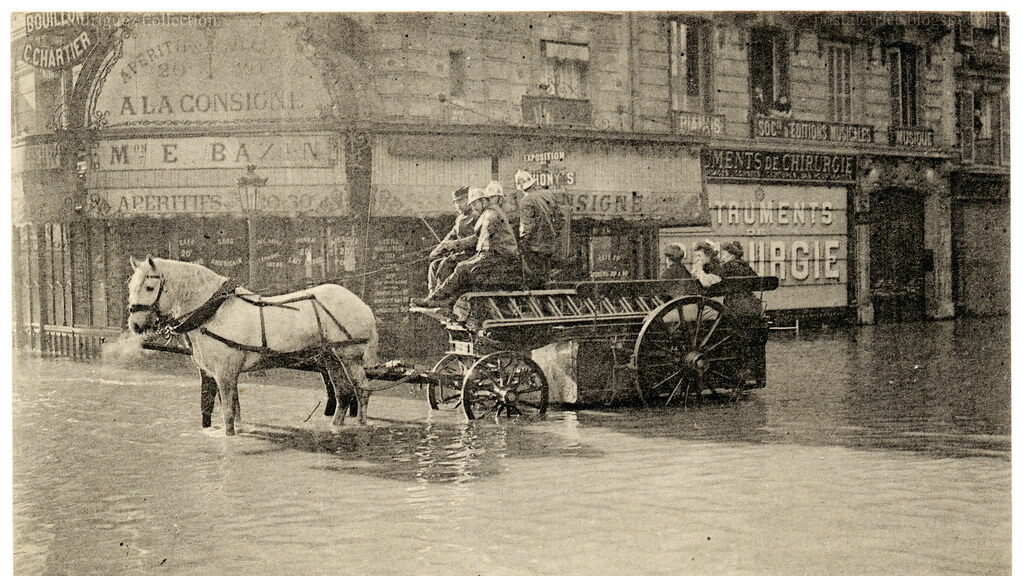
The wild ponies of Assateague Island gained fame through Marguerite Henry’s book “Misty of Chincoteague,” but in March 1962, they faced a disaster that nearly ended their centuries-old presence on the island. A powerful nor’easter known as the Ash Wednesday Storm generated 40-foot waves and storm surges that completely submerged Assateague Island off the coast of Virginia and Maryland. As floodwaters rose, the wild ponies sought higher ground, but many became trapped in rising waters. Local residents, the fire department, and the Coast Guard launched a remarkable rescue operation using boats to locate and save stranded ponies. Despite the challenging conditions, rescuers managed to bring dozens of ponies to the mainland, housing them temporarily in residents’ garages, barns, and even living rooms. Not all ponies survived the disaster—some drowned or died from exposure—but thanks to the rescue efforts, enough ponies were saved to preserve the herd. After the storm passed and the island reemerged, the rescued ponies were returned to their island home, ensuring the continuation of this iconic wild horse population.
Operation Pegasus: War Zone Evacuation
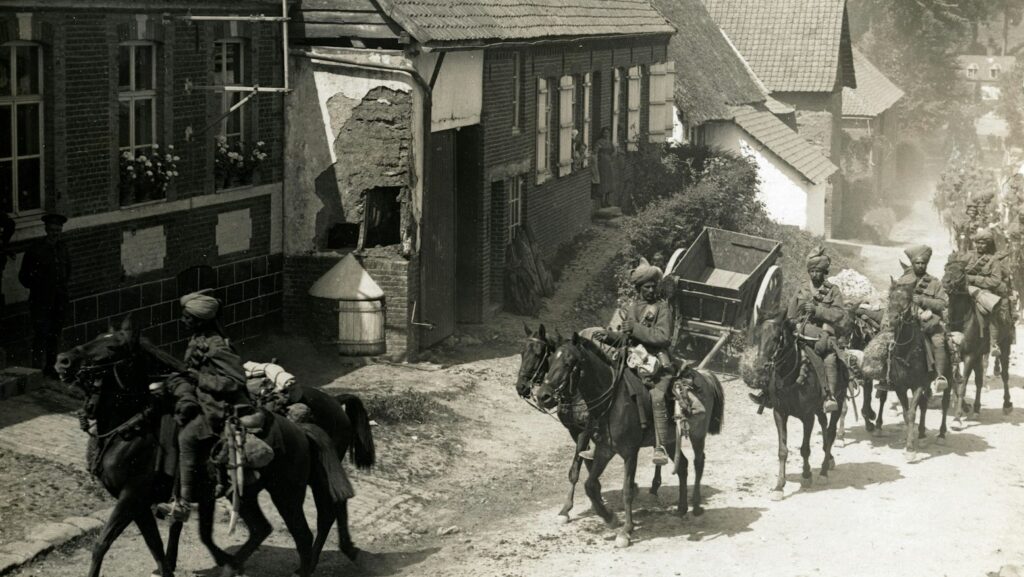
In the midst of the Bosnian War in the early 1990s, the Lipizzaner horses of the famous Lipik stud farm found themselves caught in a deadly conflict zone. When Serbian forces captured the town of Lipik in 1991, the valuable horses—part of a breeding line dating back to the 16th century—were stolen and transported to Serbia. After the Croatian recapture of the area, an international effort called “Operation Pegasus” was launched to locate and return these historically significant horses. Through diplomatic pressure, media attention, and the work of animal welfare organizations, 80 Lipizzaners were finally located at various farms in Serbian-held territories. The return of these horses required delicate negotiations during active hostilities, specialized transportation across conflict lines, and international veterinary support. Between 1995 and 1996, most of the surviving Lipizzaners were successfully repatriated to Croatia, though some had died during their captivity or transport. The rescue represented not only the salvation of individual horses but the preservation of a cultural heritage and genetic lineage that had nearly been erased by war. Today, the rebuilt Lipik stud farm continues to breed Lipizzaners, maintaining bloodlines that almost disappeared during the conflict.
Makoda’s Mountain Miracle

On September 2017, a seven-year-old Appaloosa gelding named Makoda fell into a remote ravine in the Angeles National Forest while on a trail ride with his owner. The horse tumbled more than 300 feet down a steep embankment, suffering multiple injuries but somehow surviving the fall. The location was so inaccessible that conventional rescue vehicles couldn’t reach the site, creating a seemingly impossible situation. What followed was one of the most complex equine rescues ever attempted in California. Los Angeles County Sheriff’s Department deployed their Air Rescue 5 helicopter team, working alongside veterinarians and specialized large animal rescue personnel. After sedating Makoda, rescuers secured him in a specialized helicopter harness designed for large animals—equipment that had rarely been used in real-world scenarios. With extraordinary precision, the helicopter lifted Makoda from the ravine in a sling and transported him to a nearby landing zone where a trailer waited. Despite suffering a broken jaw, lacerations and extensive bruising, Makoda recovered fully over the following months. The rescue became a case study in large animal emergency response and highlighted the remarkable collaboration between emergency services to save one horse’s life.
The Enduring Spirit of Equine Rescue
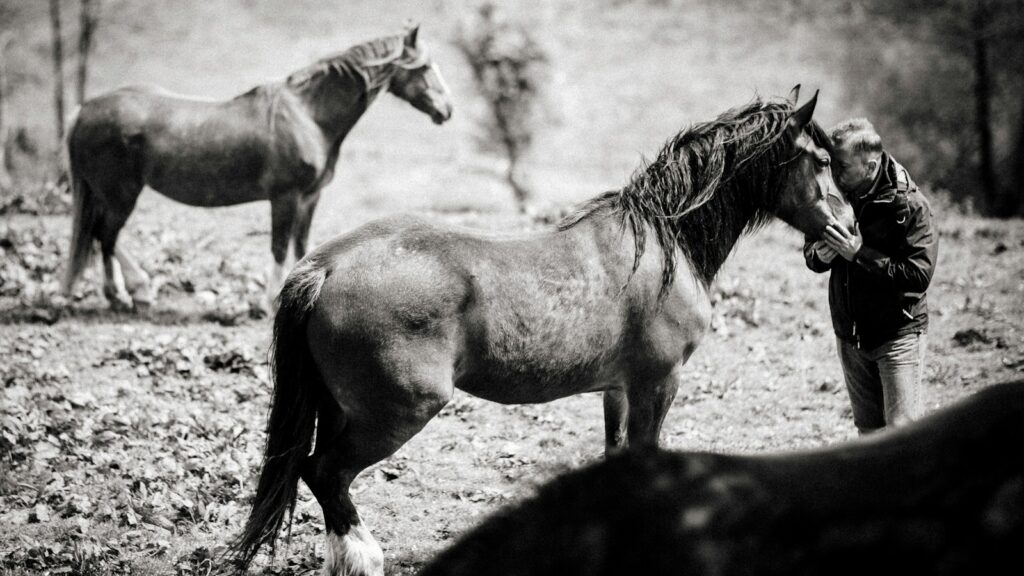
These dramatic rescue stories represent just a fraction of the countless times humans have gone to extraordinary lengths to save horses in peril. From specialized emergency response teams to everyday people who refuse to give up on an animal in distress, these accounts showcase both the vulnerability and remarkable resilience of horses. They also highlight the profound bond between humans and equines that motivates such heroic efforts—often at significant risk and expense. As our relationship with horses continues to evolve in the modern world, these rescue stories serve as powerful reminders of our responsibility toward these magnificent animals who have carried, worked alongside, and inspired humanity throughout history. Whether domesticated companions or wild symbols of freedom, horses continue to capture our hearts and call forth our most compassionate interventions when they find themselves in danger.

